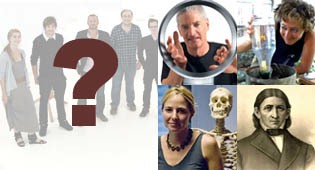












name
Meredith Thring b.1915
working life
1945 -
essentials
Prof. of Mechanical Engineering at Queen Mary College of the University of London.
In the 1960’s he was a scientist specialising in energy and fuel technology who became very involved in developing engineering ideas on “how to make the world a better place” -
Thring imagined “a society in which man lives in near equilibrium with his environment, with the minimum use of raw materials by fuel economy, complete recycling of all meals, no throw-
He developed ideas for intermediate technology for less developed countries, founded a charity called Power Aid, and was actively involved in robotics, believing that automated technology could be beneficial in dangerous occupations and freeing up society from the drudgery of factory work.
info
Of particular interest is his book ‘How to Invent’ where he wrote about the universality of invention, and was particularly concerned that educational curriculums were very poor at providing the right environment for developing an inventive mind.
In the chapter on Thinking with the Hands he uses examples of various inventions to illustrate how the physical properties of the senses, and particularly the manipulative abilities of hands, are essential in the process of inventing ideas -
“The intellectual brain can only deal with concepts, words, ideas and theories, whereas it is through the senses and the hands that one has experience of the behaviour of solids, fluids, flames, explosions, mechanisms, electric currents, magnetism, forces and heat.”
“teachers of physics know that a student who has no contact with experimental observation is totally limited”
“The use of conventional tools of all kinds -
“As far as possible therefore one prepares oneself for the inventive act by playing with models, sketching diagrams and looking at the working of existing solutions to the problem. One gets as much physical knowledge as one can of the problem and of the magnitude of the forces, velocities, temperatures and pressures involved. Crude models roughly put together in one’s own workshop can play a very useful role in giving one’s hands the ability to think about the problem.”
books
• How To Invent by Thring & Laithwaite
publ. 1977 -
Google books has a few sample pages at:
https://books.google.co.uk/books?id=fzquCwAAQBAJ
see more:
• Wikipedia entry for Meredith Thring